Title : High prevalence of multi-drug resistant H58 Salmonella Typhi and emerging fluoroquinolone resistance among febrile children in Nairobi County, Kenya
Abstract:
Background: Typhoid fever is a serious infection that primarily affects humans, with around 20 million cases reported each year, mostly in low-and middle-income countries (LMICs). Continuous monitoring of Salmonella enterica serovar Typhi (S. Typhi) in these endemic areas is crucial to track trends in antimicrobial resistance (AMR) and develop effective control measures. This study focused on S. Typhi isolates from children aged ≤16 years who showed symptoms of fever in Mukuru and Kibera informal settlements in Nairobi County, Kenya.
Methods: Blood samples for culture were collected from participants at four different health facilities. Antimicrobial susceptibility was assessed using the Kirby–Bauer disc diffusion method, and whole- genome sequencing (WGS) was performed on selected multidrug-resistant (MDR) isolates. The genomes were assembled and analysed using Pathogen-Watch to identify genotypes, resistance genes, and phylogenetic relationships.
Results: Out of 120 S. Typhi isolates tested, 50% were found to be MDR. Resistance to first-line antibiotics was common, with 65.6% resistant to ampicillin, 62.3% to sulfamethoxazole-trimethoprim, and 59% to chloramphenicol. Thirty-seven selected MDR isolates underwent WGS, all belonging to the genotype 4.3.1 (H58), which is the most prevalent MDR clade globally. These were further categorised into sub lineage 4.3.1.1 (East Africa 1), accounting for 40.5% of the sequenced isolates. Genomic analysis identified several AMR genes, including blaTEM-1D, catA1, dfrA7, sul1, and sul2. Additionally, point mutations in the quinolone resistance-determining region (QRDR) of gyrA were found in 67.6% of the isolates, with the most common mutation being S83Y. These mutations are linked to decreased susceptibility to ciprofloxacin, a key treatment for typhoid in Kenya.
Conclusion: The high rate of MDR S. Typhi, especially in children who are most affected by the disease, raises significant public health concerns. The presence of QRDR mutations further complicates treatment options, highlighting the urgent need for alternative approaches. These may include broader use of typhoid conjugate vaccines (TCVs), strengthening antimicrobial stewardship programs, and investing in improvements in water, sanitation, and hygiene (WASH) infrastructure.



